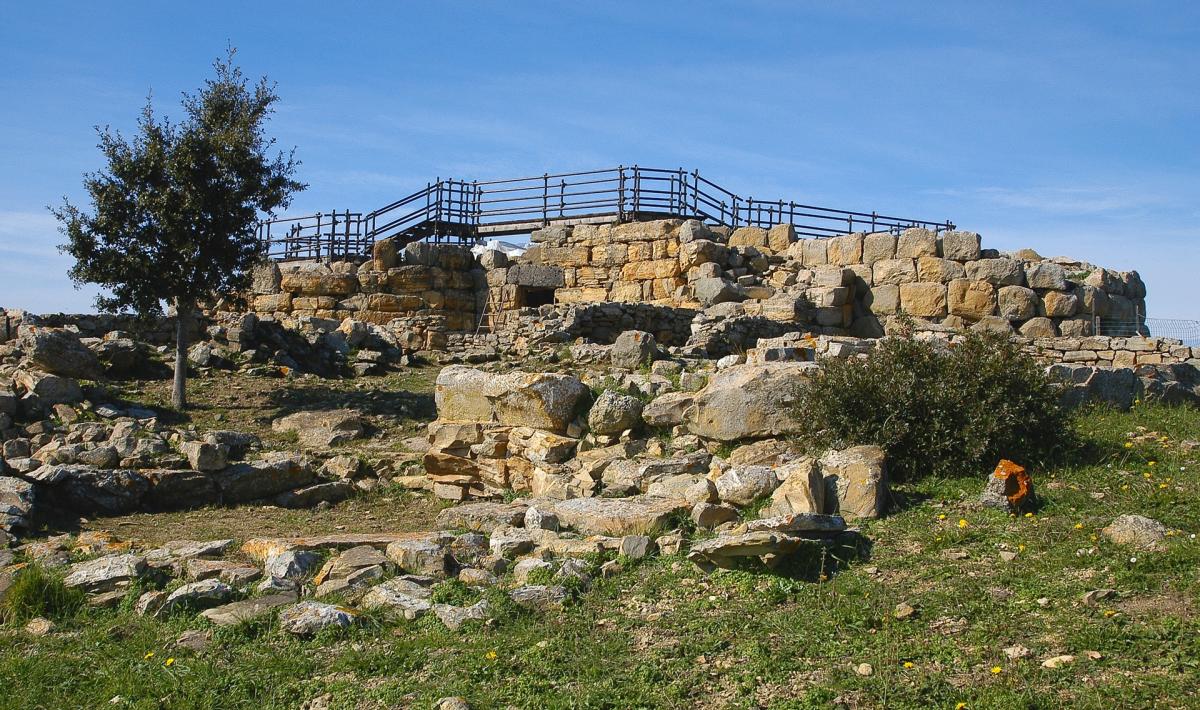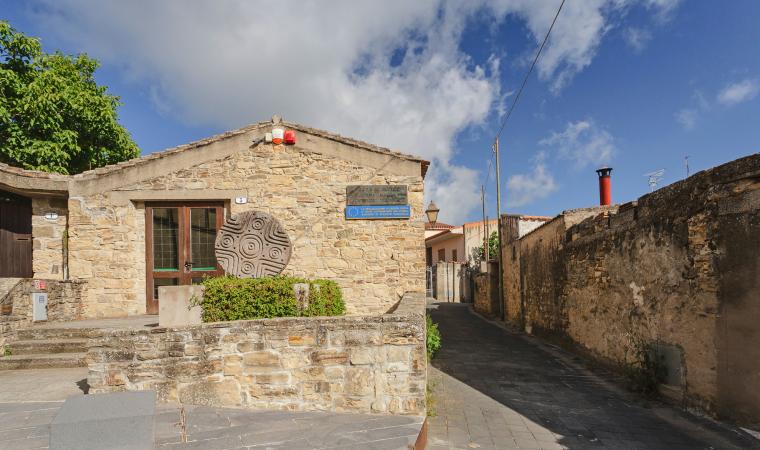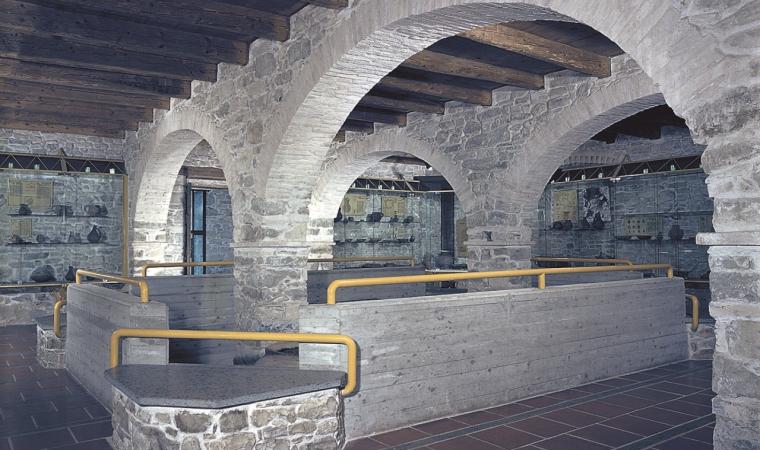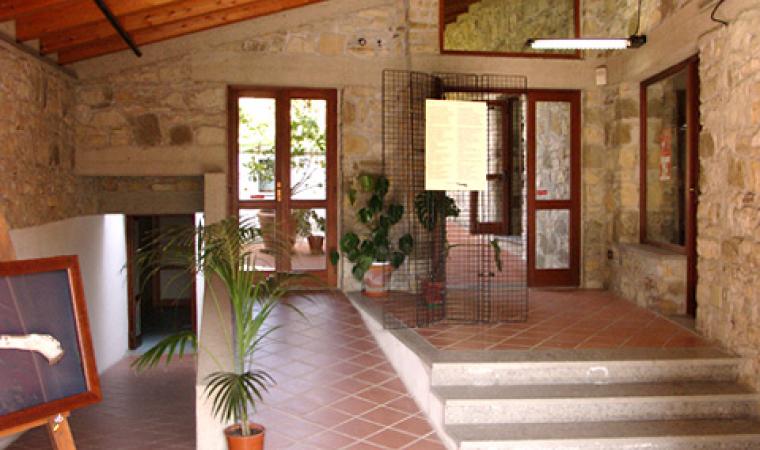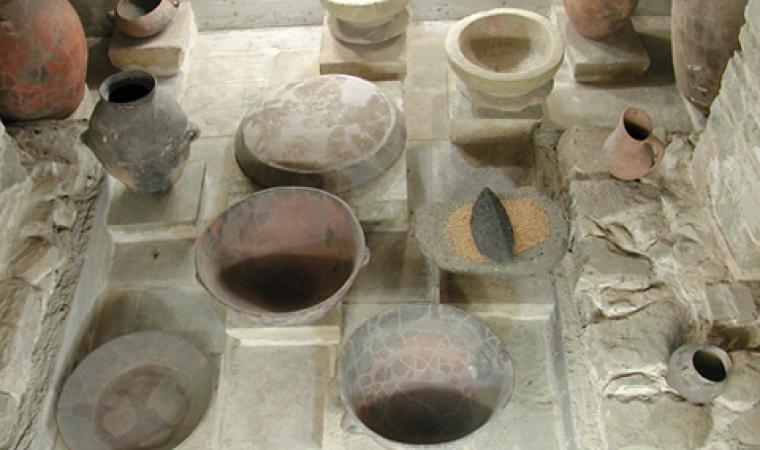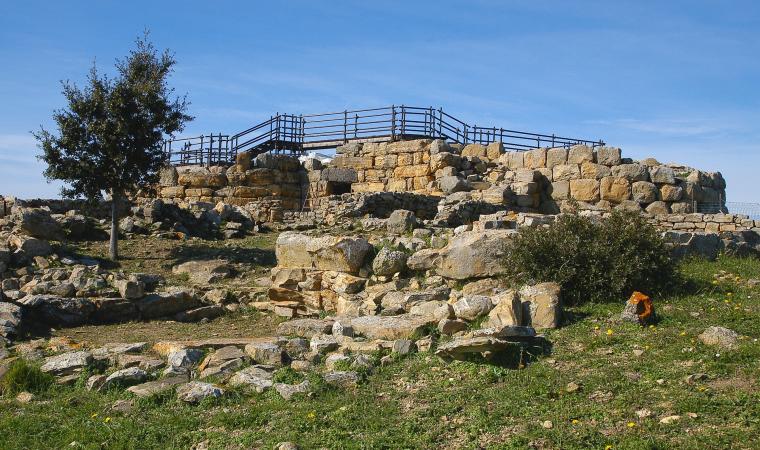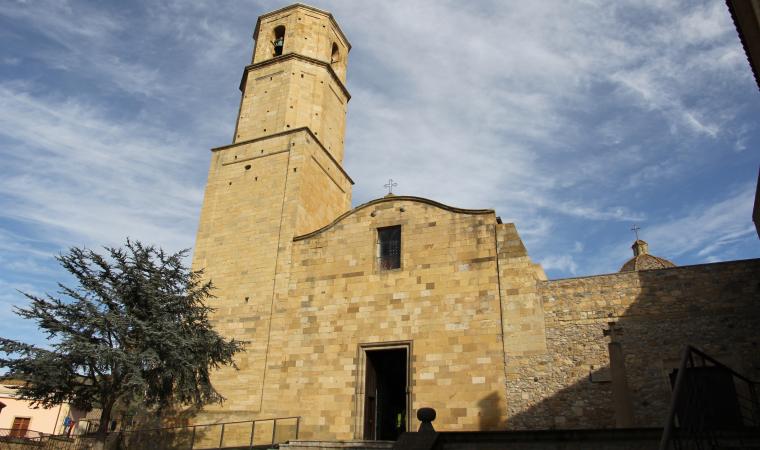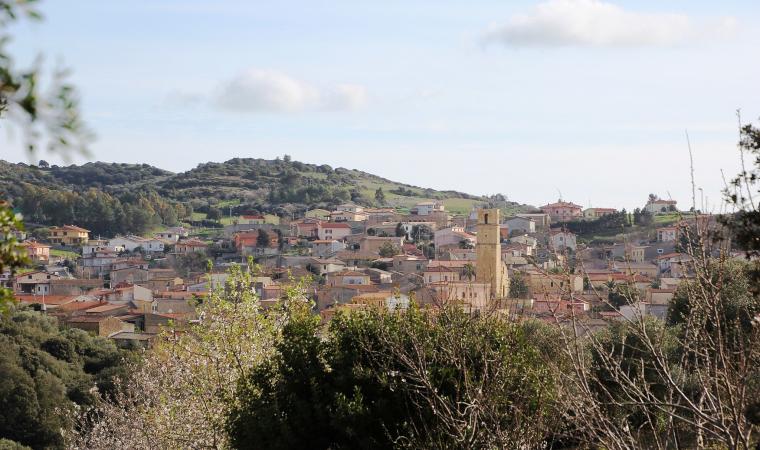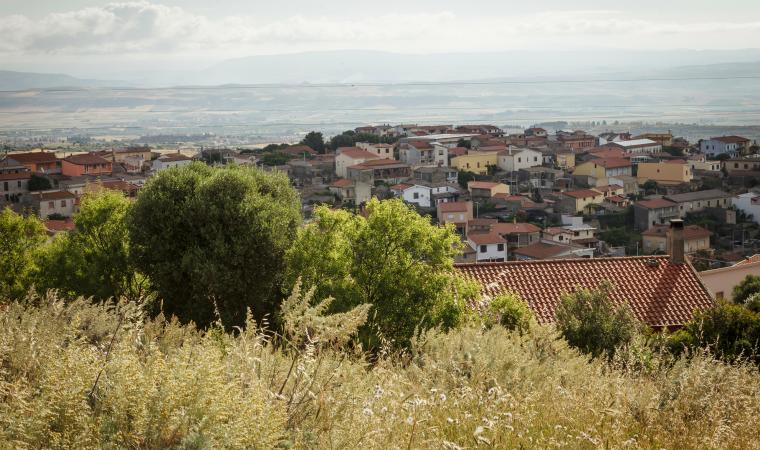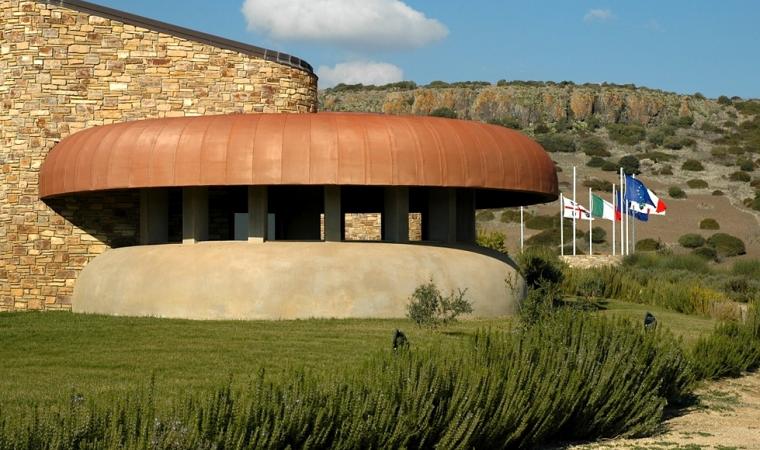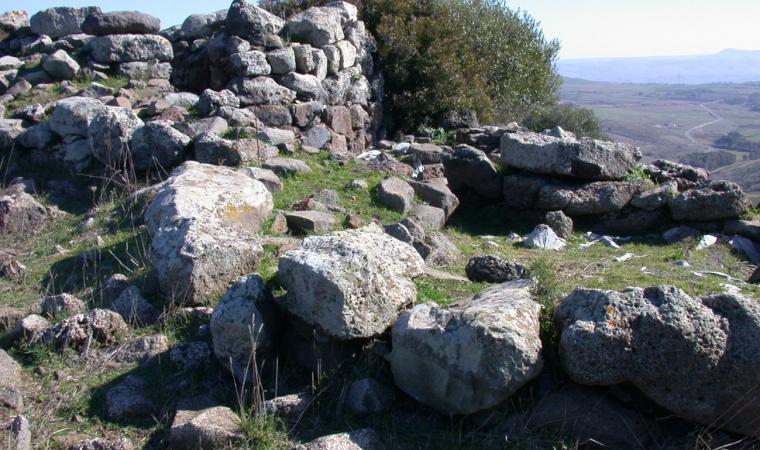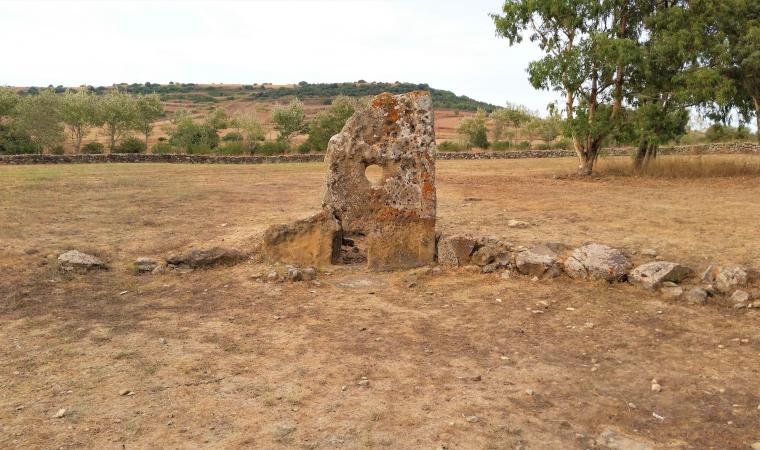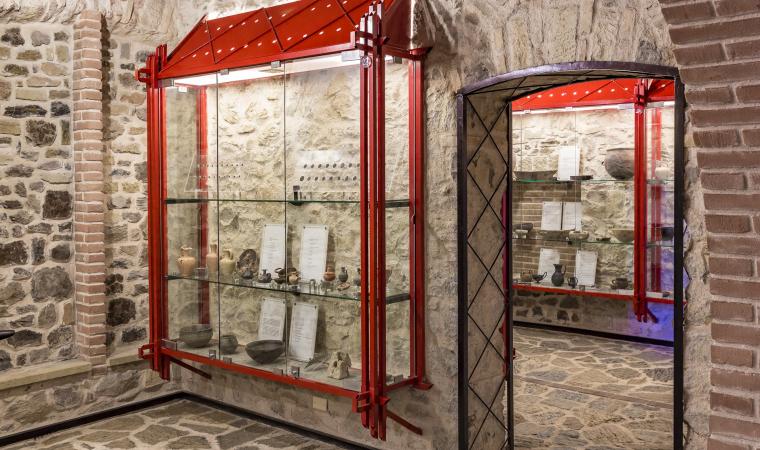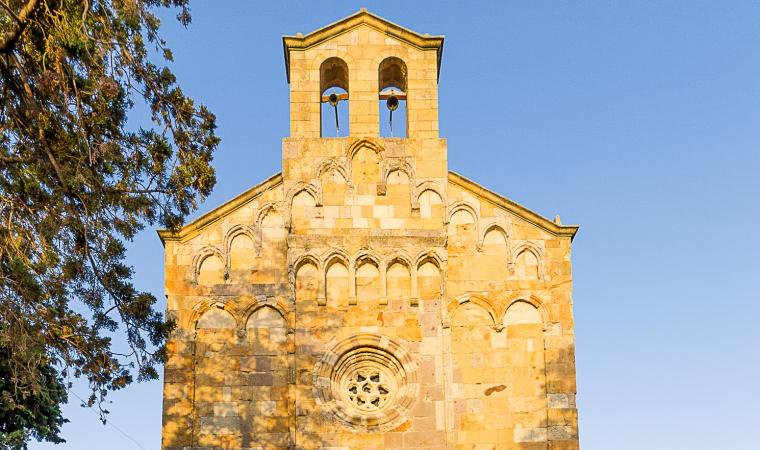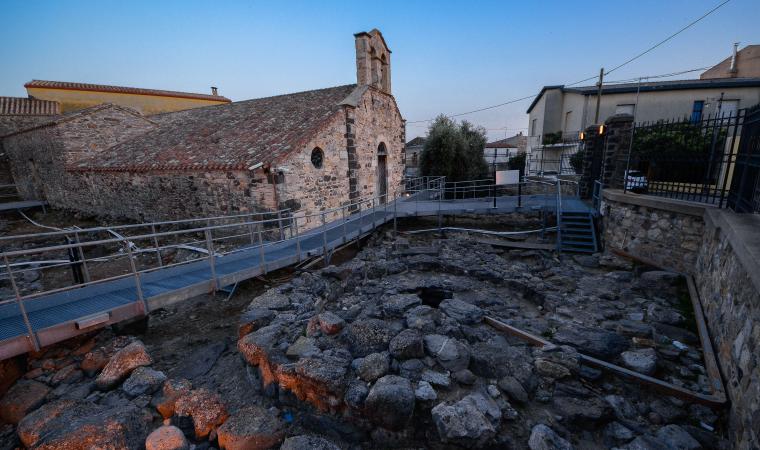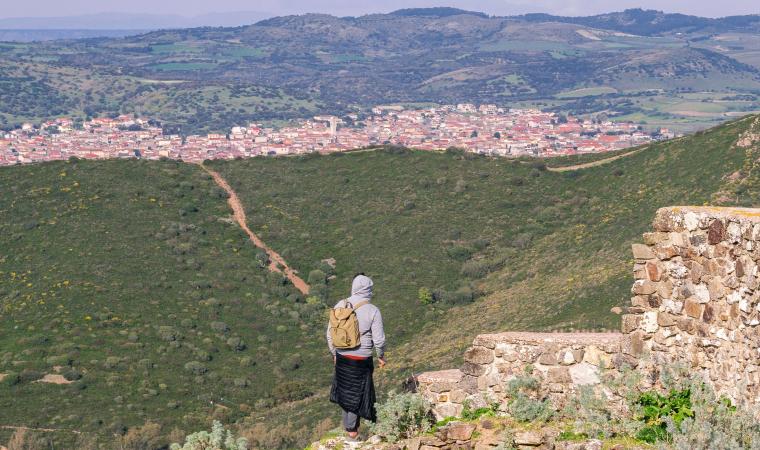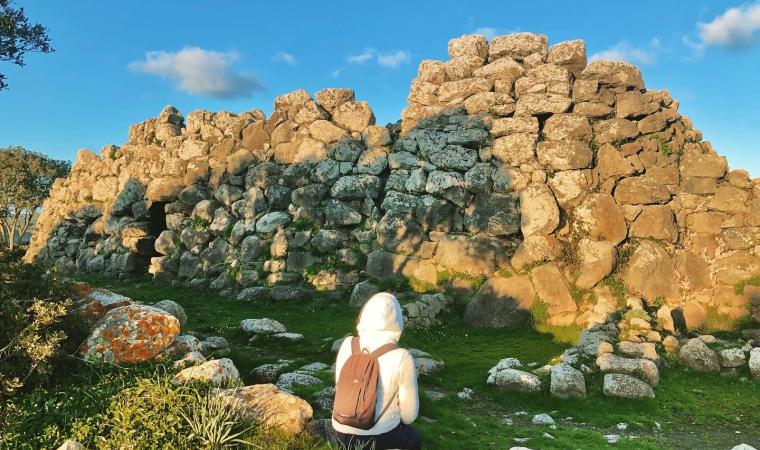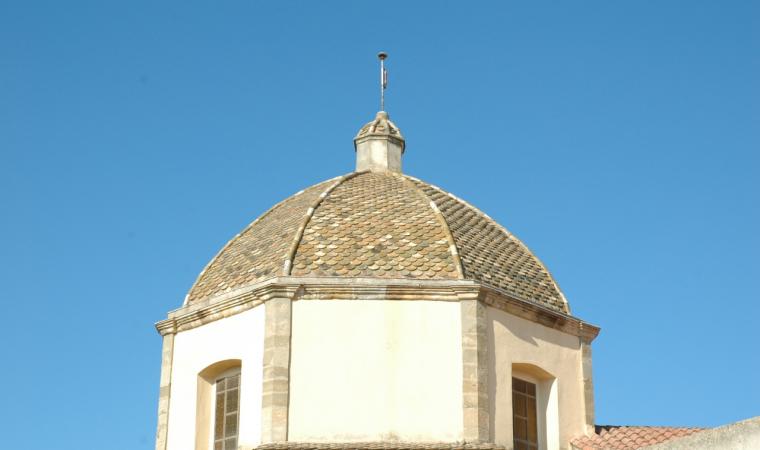Over 400 metres high, in the setting of a wooded park, fragrant with Mediterranean essences, it dominates the entire subregion of Marmilla: the view stretches all the way to the Gulf of Oristano to the west and to Cagliari, 50 kilometres away, to the south. The Nuragic complex of Genna Maria stands on a hill, watching over the territory, one kilometre from Villanovaforru, a village that was founded under Spanish domination and became famous after its discovery in the middle of the twentieth century. It is a Nuraghe with a complex structure: originally, in the 15th century BC, a central fortified tower (two metres tall) with an inner room, was surrounded by a bastion with three large towers joined by thick walls, which still enclose a courtyard with a well partly dug out of the rock. In a second phase, at the beginning of the Late Bronze Age (13th century BC), the tower was enclosed and partially surrounded by a bastion with four towers that had slits in them. In turn, the quadrilobed rampart, the function of which was presumably defensive, was enclosed (11th century BC) by sturdy city walls with six corner-towers. Both inside and outside of it, there is the village, which emerged around the 10th century BC and was built in several phases, as is evident in the evolution of the dwellings. The most recent huts have a complex central-plan structure, with elliptic, quadrangular and rectangular rooms that are functional and decorated with various shapes. The 'house with a central courtyard' is exceptional. It is 150 square metres in size and is divided into spaces that converge into a single courtyard.
The complex remained unpopulated for a long time during the Iron Age and then, in the Punic-Roman age (from the 4th century BC), it was used for votive purposes in honour of Demeter and Persephone: bloody sacrifices were made in the open-air courtyard, while in the centre of the room there was a sacellum used as a simulacrum and for ex voto offerings from worshippers. The precious artefacts, a good 600 oil lamps, coins, vitreous and earthenware pots, flasks, small jugs, ember-carriers, cooking bowls, millstones and animal bones, can be attributed to seven centuries of frequentation and they bear witness to the industriousness of the Nuragic and Post-Nuragic communities. Today, they are kept in an elegant nineteenth-century building in the centre of the village, once a 'Monte Granatico' (a 'grain bank'), which later became the archaeological museum of Genna Maria. Findings from the Pre-Nuragic, Nuragic, Punic and Roman periods and from Late Antiquity are also on display here and come from settlements, necropolises and monumental tombs in villages in the Marmilla area, which form the consortium of Sa Corona Arrubia. Inside, you can relive the everyday life of the Nuragic populations and the evolution of sacred rituals, until those of the Roman and Byzantine periods.

